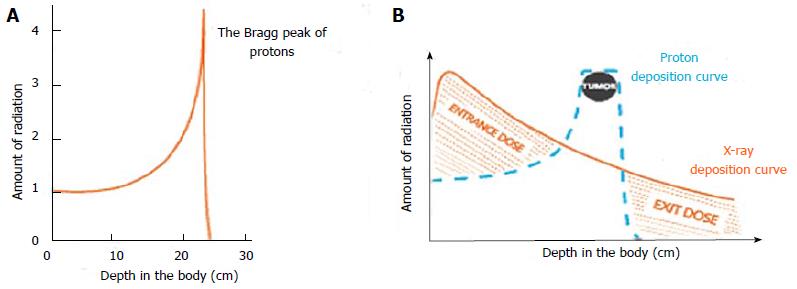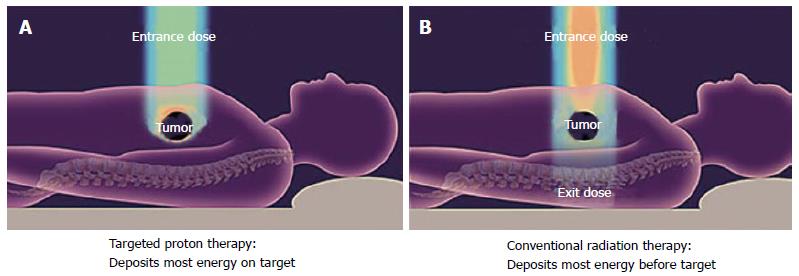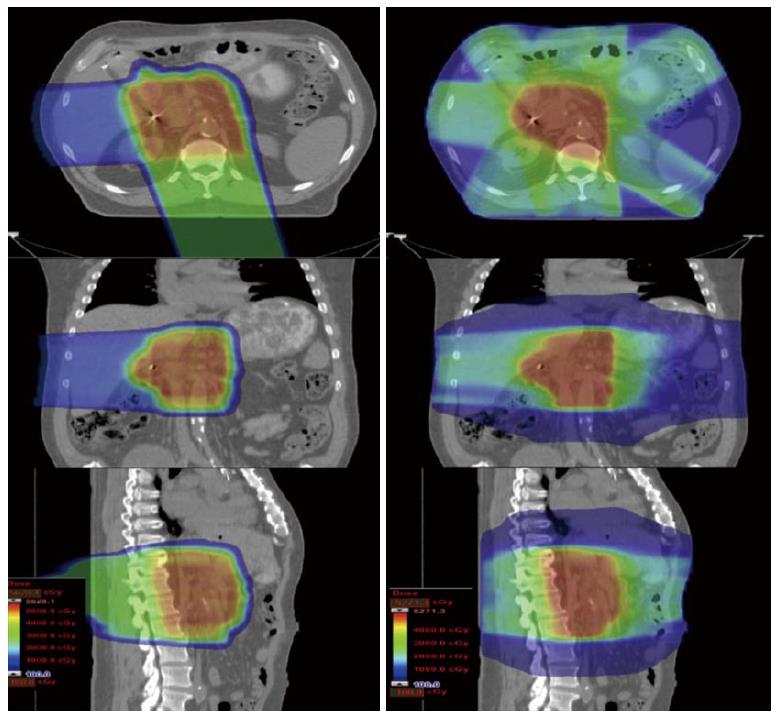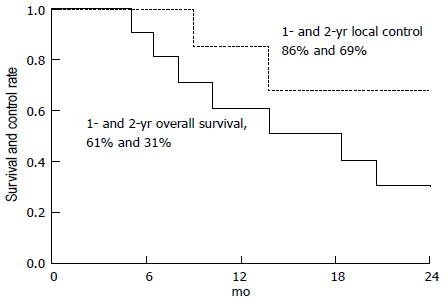Copyright
©The Author(s) 2015.
World J Gastrointest Oncol. Sep 15, 2015; 7(9): 141-147
Published online Sep 15, 2015. doi: 10.4251/wjgo.v7.i9.141
Published online Sep 15, 2015. doi: 10.4251/wjgo.v7.i9.141
Figure 1 Charged particles like protons travel a finite distance into tissue, as determined by their energy, and then release that energy in a tightly defined region called “Bragg peak” (A).
By delivering a range of energies toward the tumor target, a summation of these Bragg peaks allow for the creation of a “spread-out Bragg peak”, which conforms to the depth and position of the tumor target (B). Image borrowed from the University of Florida Health Proton Therapy Institute.
Figure 2 With X-rays, the tumor dose is significantly less than the entry dose and exit dose is delivered beyond the tumor target.
With conventional radiotherapy (A) using X-rays (photons), the highest dose is near the point of beam entry into the patient. The tumor dose is significantly less than the entry dose. Also, an exit dose is delivered beyond the tumor target. With protons (B) and other particle therapies, such as carbon ions, the entry dose is low. The highest dose is at the depth of the tumor target and there is no exit dose beyond the target. Image borrowed from the University of Florida Health Proton Therapy Institute.
Figure 3 A passively scattered proton plan is shown on the left and an intensity-modulated X-ray therapy plan is shown on the right for a typical patient receiving postoperative radiotherapy for pancreatic cancer.
To achieve a conformal dose distribution, the intensity-modulated X-ray therapy plan delivers beams from multiple angles and necessarily irradiates the entire cylinder of the abdomen. With protons, however, because the dose distribution can be modulated along the beam path, significant sparing of sensitive gastrointestinal structures (small bowel and stomach) can be achieved. In the proton plan, 75% of the dose is delivered via a posterior field that irradiates the tumor bed but does not exit into the small bowel. The remaining dose is delivered through a right lateral field that also irradiates the tumor bed but does not exit into the stomach.
Figure 4 Overall survival and freedom from local progression at 2 years for 11 patients accrued to a phase II clinical trial for unresectable pancreatic cancer.
Image borrowed from Ref. [19].
- Citation: Nichols RC, Huh S, Li Z, Rutenberg M. Proton therapy for pancreatic cancer. World J Gastrointest Oncol 2015; 7(9): 141-147
- URL: https://www.wjgnet.com/1948-5204/full/v7/i9/141.htm
- DOI: https://dx.doi.org/10.4251/wjgo.v7.i9.141












